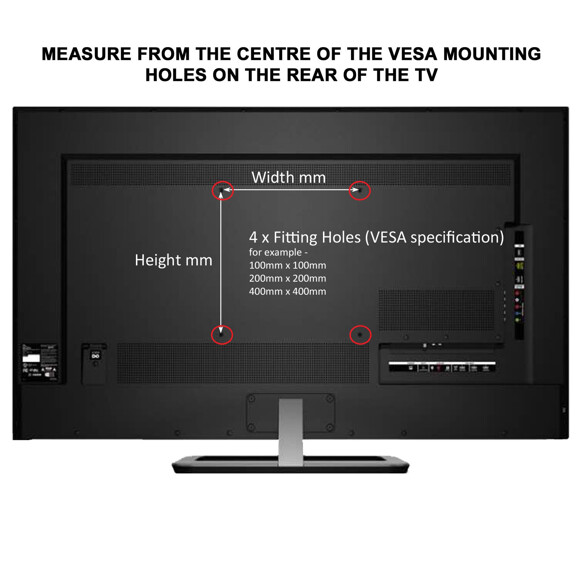Understanding VESA
All about VESA
If you are going to put a flat screen TV or computer monitor on the wall then you’ll almost certainly have come across the term VESA.
Not surprisingly therefore if you are interested in buying a TV bracket then you’ll equally come across its use both on the TV specifications and in the details of the various TV wall mounts and TV brackets.
To start with the term VESA is just another industry acronym or piece of jargon that our “educated friends” like to invent to add a sense of mystery. In reality it is just an international standard for a method and system for setting sizes to mount TVs on a TV bracket and then onto the wall.
If your TV is VESA compatible all it means is that the fixing holes in the rear of the set conform to an agreed pattern of sizes. These are in millimetres and cover the distance apart of the holes in firstly horizontal plain, then in vertical. So a VESA size might be given as 200 x 200 or perhaps 400 x 600, the first measurement being the width apart, the second being the height apart. Nothing more complicated than that.
So when you have your TV and you start to look at what TV bracket might be suitable, first of all establish what measurements of fixing holes your TV has. If it is VESA standard fine, but equally if it isn’t that fine too. All you need is the sizes apart of the fixing holes and then ensure that whatever TV bracket you are looking at can take that size. We would usually recommend a TV bracket able to hold a slightly bigger size to give you that extra flexibility and room for error.
You should also check how wide the TV bracket is. The last thing you need is to get it up on the wall and find it’s wider than the TV and therefore unsightly, so after you’ve got the holes sizes sorted do please check that the length isn’t going to be more than that of TV!
Really it’s nothing more than we’ve detailed. We get all sorts of questions from worried consumers concerned about VESA sizes and therefore we do hope this little bit of help and advice has been useful – and of course if there are questions you need answering just email and we’ll get onto it straightaway

Was this answer helpful?
We appreciate the feedback to ensure our answers are as informative as possible.
